Keeping your furry friend’s teeth clean is crucial for their overall health and well-being. Yet, many pet owners overlook the importance of dental care for their dogs. Just like humans, dogs require regular dental hygiene to prevent plaque buildup, tartar formation, and other dental issues. But how exactly do you brush a dog’s teeth? In this comprehensive guide, we’ll walk you through everything you need to know about brushing your dog’s teeth, from why it’s important to how to do it effectively.
Contents Overview
Why Brush Your Dog's Teeth?
Brushing your dog’s teeth is not just about keeping their breath fresh; it’s an integral part of their overall health care regimen. Here’s why it’s crucial to brush your dog’s teeth regularly:
- Preventing Dental Issues: Just like humans, dogs are susceptible to dental problems such as plaque buildup, tartar formation, gum disease, and tooth decay. Plaque, a sticky film of bacteria, can accumulate on your dog’s teeth, leading to tartar formation if not removed. Tartar, or calculus, is a hard, yellowish deposit that adheres to the teeth and can only be removed by a veterinarian. Without proper dental care, plaque and tartar can irritate the gums, causing inflammation (gingivitis) and eventually leading to more severe periodontal disease.
- Maintaining Oral Health: Dental problems don’t just affect your dog’s mouth; they can also impact their overall health. The bacteria present in plaque and tartar can enter the bloodstream through inflamed gums, potentially leading to systemic issues such as heart disease, kidney problems, and respiratory infections. By keeping your dog’s teeth clean, you’re not only preventing dental issues but also safeguarding their overall well-being.
- Preventing Pain and Discomfort: Imagine how uncomfortable it would be to have a toothache or swollen gums. Dogs experience the same pain and discomfort from dental problems. They may show signs of oral discomfort by pawing at their mouth, drooling excessively, or refusing to eat. Regular brushing helps prevent dental pain and discomfort, ensuring your dog’s continued happiness and well-being.
- Improving Quality of Life: Dental issues can significantly impact your dog’s quality of life. Painful teeth and gums can make it difficult for them to eat, leading to weight loss and nutritional deficiencies. Additionally, untreated dental problems can affect your dog’s behavior and temperament, causing irritability, aggression, or depression. By prioritizing your dog’s dental health, you’re helping them live a happier, healthier life.
- Cost Savings: While professional dental cleanings performed by a veterinarian are essential for maintaining your dog’s dental health, they can be costly and require anesthesia. By brushing your dog’s teeth regularly at home, you can reduce the frequency of professional cleanings and potentially lower your veterinary expenses in the long run. Additionally, preventing dental issues early on can help avoid the need for more invasive and expensive dental procedures in the future.
In summary, brushing your dog’s teeth is not just a cosmetic concern; it’s a vital aspect of their overall health care. By preventing dental issues, maintaining oral health, and improving their quality of life, regular toothbrushing plays a crucial role in keeping your furry friend happy and healthy for years to come.
How Often Should You Brush Your Dog's Teeth?
Ideally, you should brush your dog’s teeth every day or at least several times a week. However, even brushing a few times a month is better than not brushing at all. The key is to establish a routine and stick to it.
Choosing the Right Tools
Before you start brushing your dog’s teeth, gather the necessary tools:
- Dog Toothbrush: Use a toothbrush specifically designed for dogs. These brushes are typically smaller and have softer bristles than human toothbrushes.
- Dog Toothpaste: Never use human toothpaste for your dog, as it contains ingredients that can be harmful if swallowed. Instead, opt for toothpaste made specifically for dogs, available in various flavors like poultry or beef to make the experience more enjoyable for your pup.
- Optional: Finger Brush or Gauze: If your dog is resistant to using a traditional toothbrush, you can try using a finger brush or wrapping gauze around your finger.
STep-by-Step Guide to Brushing Your Dog's Teeth Effectively
Brushing your dog’s teeth may seem like a daunting task, but with the right approach and techniques, it can become a manageable and even enjoyable part of your pet care routine. Here’s a detailed step-by-step guide to brushing your dog’s teeth effectively:
- Introduce Your Dog to Toothbrushing:
- Before diving into toothbrushing, take some time to familiarize your dog with the toothbrush and toothpaste. Allow them to sniff and lick the toothbrush and toothpaste to get accustomed to the taste and texture.
- Use positive reinforcement techniques such as praise, treats, or favorite toys to create a positive association with toothbrushing.
- Choose a Quiet, Calm Environment:
- Find a quiet, comfortable space where you and your dog can relax during the brushing session. Avoid noisy or busy areas that could distract your dog and make the experience stressful.
- Position Your Dog:
- Sit or kneel next to your dog, ensuring they are calm and relaxed. You may need to gently restrain them if they’re particularly wiggly or anxious.
- If your dog is small, you can place them on a table or countertop at a comfortable height for brushing.
- Apply Toothpaste:
- Squeeze a pea-sized amount of dog toothpaste onto the toothbrush. Never use human toothpaste, as it contains ingredients that can be harmful if swallowed by dogs.
- Lift your dog’s lip to expose their teeth, then gently brush the outer surfaces in a circular motion. Focus on the gum line where plaque tends to accumulate.
- Be Patient and Gentle:
- Take your time and be gentle, especially if it’s your dog’s first time getting their teeth brushed. Use slow, deliberate motions to avoid causing discomfort or injury.
- If your dog is resistant to brushing, start by gently massaging their gums with your finger or a soft cloth to help them get used to the sensation.
- Gradually Increase Duration:
- Start with short brushing sessions, gradually increasing the duration as your dog becomes more comfortable with the process. Aim for at least 30 seconds to 1 minute of brushing per session.
- Be consistent with your brushing routine, ideally brushing your dog’s teeth every day or at least several times a week to maintain their dental health.
- Don’t Forget the Back Teeth:
- Pay special attention to the back teeth, as these are often overlooked but prone to plaque buildup and tartar formation.
- Use a gentle, back-and-forth motion to brush the inner surfaces of your dog’s teeth, being careful not to poke or jab their gums.
- Reward Your Dog:
- Once you’re done brushing, reward your dog with praise, treats, or a favorite toy to reinforce positive behavior. Make toothbrushing a positive and enjoyable experience for your furry friend.
Challenges and Tips for Success
Challenges of Brushing Your Dog's Teeth
Brushing your dog’s teeth may sound simple, but it often comes with several challenges:
- Resistance: Many dogs resist having their teeth brushed, making the process stressful for both the pet and the owner.
- Fear or Anxiety: Some dogs may feel anxious or fearful when approached with a toothbrush or dental tools, making it difficult to initiate brushing.
- Lack of Cooperation: Dogs may squirm, wiggle, or even snap when you try to brush their teeth, making it challenging to complete the task effectively.
- Inaccessibility: Accessing the inner areas of your dog’s mouth can be tricky, especially if your dog is uncooperative or has a small mouth.
Tips for Successful Tooth Brushing Sessions
While brushing your dog’s teeth can be challenging, it’s not impossible. With the right approach and some patience, you can make dental care a routine part of your dog’s grooming regimen:
- Start Early: Introduce tooth brushing to your dog as early as possible, preferably when it’s still a puppy. This helps them get accustomed to the process from a young age.
- Use Dog-Friendly Toothpaste: Never use human toothpaste for your dog, as it contains ingredients that can be harmful if ingested. Opt for toothpaste specifically formulated for dogs in flavors they enjoy, such as poultry or beef.
- Get the Right Tools: Invest in a high-quality dog toothbrush or finger brush that is the right size for your dog’s mouth. Additionally, consider using dental wipes or pads as an alternative if your dog is resistant to traditional brushing.
- Take it Slow: Gradually introduce your dog to the toothbrush by letting them sniff and lick it before attempting to brush their teeth. Start with short sessions, gradually increasing the duration as your dog becomes more comfortable.
- Use Positive Reinforcement: Reward your dog with praise, treats, or a favorite toy after each successful brushing session. Positive reinforcement helps create a positive association with tooth brushing.
- Focus on Consistency: Make tooth brushing a regular part of your dog’s routine, ideally on a daily basis. Consistency is key to maintaining good oral hygiene and preventing dental problems.
- Be Patient: Patience is crucial when it comes to brushing your dog’s teeth. If your dog resists or becomes stressed, take a break and try again later rather than forcing the issue.
Bottom Line
Brushing your dog’s teeth is an essential part of their overall health care routine. By establishing a regular brushing schedule and using the right tools and techniques, you can help prevent dental issues and keep your dog’s mouth healthy and fresh. Remember to be patient and consistent, and always reward your dog for cooperating during toothbrushing sessions. Your furry friend will thank you for it with a happy, healthy smile!

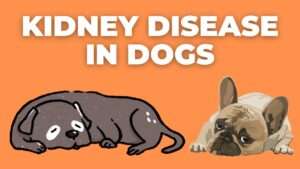
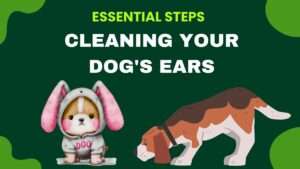

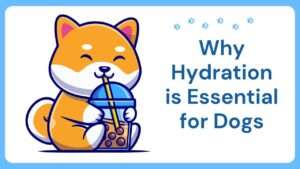




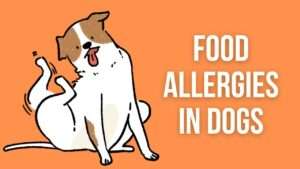


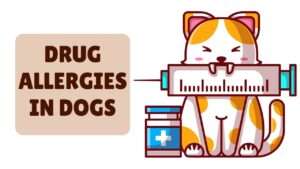
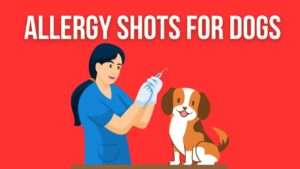

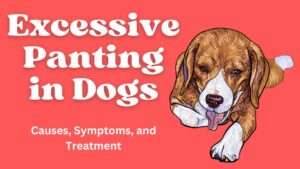

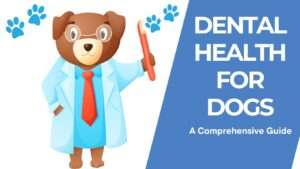
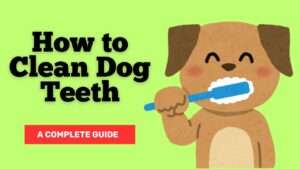
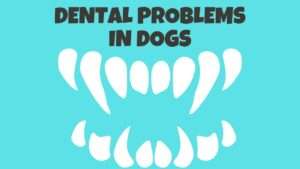







+ There are no comments
Add yours